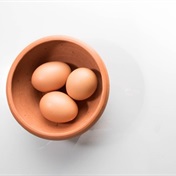New soy germ-enriched pasta improves endothelial function, blood pressure, and markers of oxidative stress in patients with type 2 diabetes, researchers report in the online Diabetes Care.
"In the treatment of type 2 diabetes, dietary modifications potentially represent a more attractive and cost-effective approach than drugs," Dr Kenneth D. R. Setchell from University of Cincinnati College of Medicine, Ohio, said. Presently, this pasta has become available in Italy.
Dr Setchell and colleagues from Italy compared the effects of the soy germ-enriched pasta, containing isoflavone aglycons, with conventional pasta on endothelial function and cardiovascular risk markers in a 20-week crossover study of 26 adults with type 2 diabetes. After withdrawals, 20 patients remained for analysis.
Pasta also lowers serum homocysteine
Brachial artery flow-mediated vasodilation increased by about 5% after consuming soy germ-enriched pasta and decreased after consuming conventional pasta.
Although conventional pasta had no effect on blood pressure, systolic blood pressure decreased from 133 mm Hg to 126 mm Hg and diastolic blood pressure decreased from 79 mm Hg to 73 mm Hg after consuming soy germ-enriched pasta.
Compared with conventional pasta, soy germ-enriched pasta was associated with significant improvements in several markers of oxidative stress, including total antioxidant capacity, plasma 8-iso-PGF2alpha, and glutathione.
Serum homocysteine concentrations were also lower after consuming soy germ-enriched pasta than after consuming conventional pasta.
Pasta is a good carbohydrate
Neither pasta brought significant changes in plasma insulin, glucose, or HbA1c levels.
"At the end of the day, pasta is a very healthy food, a good carbohydrate," Dr Setchell concluded. "Unfortunately it is not always viewed that way because it is clumped together with carbohydrates in general."
"The effectiveness of this pasta appears to be because the isoflavones contained within the pasta are mainly in aglycon form," Dr Setchell said. "Most of the clinical studies performed in the Western world, particularly the USA, have used soy products that do not have significant levels of isoflavone aglycons and the results have been mixed. This difference may be the fundamental reason this pasta is proving so effective."
"We would like to perform several other studies, one on inflammatory condition, because we believe, based on the data from the previous studies, that the isoflavones confer some anti-inflammatory effects," Dr Setchell explained.
Two of the study authors, including Dr Setchell, disclosed financial interests in Aliveris s.r.l., the company that makes the pasta.
(Reuters Health, August 2011)
Read more:




 Publications
Publications
 Partners
Partners










